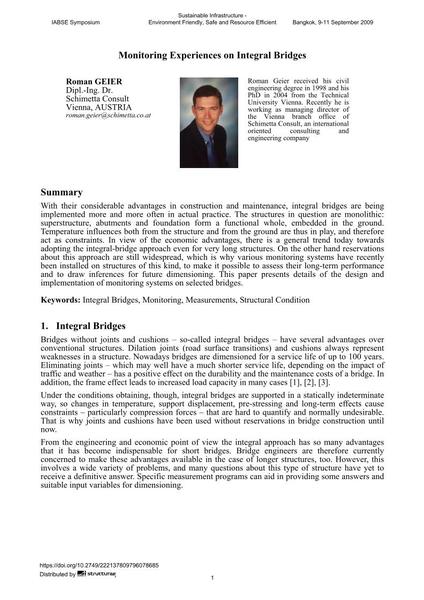Monitoring Experiences on Integral Bridges

|
|
|||||||||||
Bibliographic Details
| Author(s): |
Roman Geier
|
||||
|---|---|---|---|---|---|
| Medium: | conference paper | ||||
| Language(s): | English | ||||
| Conference: | IABSE Symposium: Sustainable Infrastructure - Environment Friendly, Safe and Resource Efficient, Bangkok, Thailand, 9-11 September 2009 | ||||
| Published in: | IABSE Symposium Bangkok 2009 | ||||
|
|||||
| Page(s): | 1-10 | ||||
| Total no. of pages: | 8 | ||||
| Year: | 2009 | ||||
| DOI: | 10.2749/222137809796078685 | ||||
| Abstract: |
With their considerable advantages in construction and maintenance, integral bridges are being implemented more and more often in actual practice. The structures in question are monolithic: superstructure, abutments and foundation form a functional whole, embedded in the ground. Temperature influences both from the structure and from the ground are thus in play, and therefore act as constraints. In view of the economic advantages, there is a general trend today towards adopting the integral-bridge approach even for very long structures. On the other hand reservations about this approach are still widespread, which is why various monitoring systems have recently been installed on structures of this kind, to make it possible to assess their long-term performance and to draw inferences for future dimensioning. This paper presents details of the design and implementation of monitoring systems on selected bridges. |
||||
| Keywords: |
integral bridges monitoring measurements Structural Condition
|
||||

